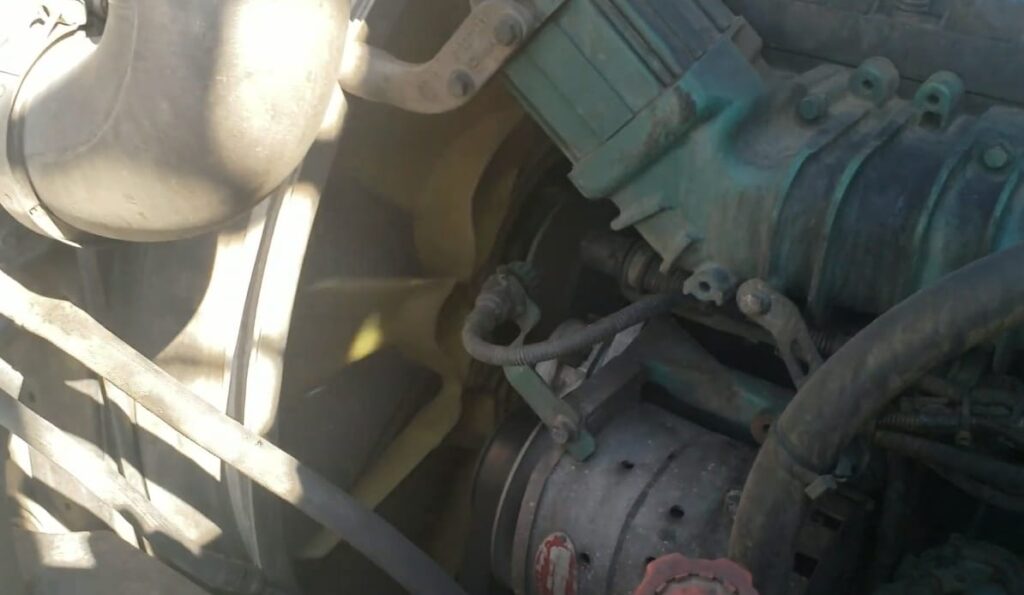Volvo D13 fan clutch problems can easily creep up to you when you are not prepared.
Moreover, these issues do arise when you fail to keep your vehicle well-maintained. This is why it is very important to get every critical components of your vehicle checked by a specialist to avoid these issues from occurring.
When you fan clutch is working properly and is well-maintained, your engine is also expected to do well. This is why it is essential to keep this thing in mind. If your fan clutch is working well, then you can ensure it to maintain an optimal temperature range. Otherwise, you run the risk of getting stranded while working through costly repair works.
With all these things in mind, let us have a look at the most common signs of Volvo D13 fan clutch problems and what you can do about these. Let’s get right into it.

Contents
Symptoms Of Volvo D13 Fan Clutch Problems
If you have a bad fan clutch, or it is on its way to failing, you should be able to notice a few signs before it starts to deteriorate and stop working completely. This is why it is important to know what the symptoms are and to take action once you observe these. Otherwise, you may end up worrying about the steep costs of repair and replacement of crucial parts.
Generally, an overheated engine even when running at a low speed – or while at a stop – is the most typical sign of a fan clutch problem. When you are stopped, the fan clutch is not engaged and this prevents air from getting forced through your radiator. Hence, it is impossible for heat to dissipate from the engine.
In the winter, having not enough heat is another issue but it is opposite of the case during the winter. When your fan clutch stops working, it stays engaged all of the time, which cools your engine more than what is required. Hence, you will notice too much fan noise when your vehicle is at a high speed, and this can result in a problematic fan clutch that leads to bearing damage, as well as a radiator damage once the blades end up flexing too far. In some cases, the plastic fan may even shatter.
If you are concerned about the fan clutch, you may want to inspect its condition to make sure there are no further issues happening.
Here are some tips on how to check your fan clutch:
1. Spin your fan
In the case of electronic types, it is possible to freewheel the fan. However, many fan clutches may be able to spin by simply applying minimal effort. When you notice that your fan spins over three times, the fan clutch may be starting to go bad. But when there is no spinning action at all, it may be possible that you have a seized ebaring.
2. Wiggle your fan.
Consider moving your fan backward and forward. When you notice a wobble for over a quarter inch or perhaps you feel some clicking, it may be a sign of a worn bearing.
3. Check for leaks.
The heavy silicone oil is essential for ensuring an optimal function of your fan clutch. The viscosity of the oil makes for a soft engagement, which drives your fan. But when there is a leak, this will weaken the clutch and cause it to fail eventually.
4. Inspect the speed of your fan.
It is important to detect audibly when there is an engagement in the fan clutch, which is followed by a rush of air. When your engine is in idle this causes the engine temperature to go up, which is why your thermal fan clutch should engage once a particular temperature has been reached.
You can use an optical tachometer when measuring the fan speed. Check for a sudden increase in the fan speed as the engine temperature rises.
It is also recommended to use a scan tool, which is good for diagnosing electronic fan clutches. This also helps to check the sensors that aims to identify fan engagement.
When you have determined that the fan clutch is indeed failing, it is highly recommended to get it replaced sooner than later. Otherwise, there is a high risk of an engine damage, which can seriously impact your vehicle and its performance.
Further Things To Take Note Of
When you suspect a bad fan clutch, it is possible that the fan is starting to get loose. You should pull over and make sure your vehicle is parked at a safe place. Then, you should check the engine and determine whether your fans are placed properly or not.
If it is loose, you should tighten it back, which should fix the issue. Always make it a priority to check the fan’s connections. In case there is no movement at all to the fan, it may be due to the wirings being cut off. This is why you should access the wires and connect these to fix any issue. But if there are cracks or damages on your wires, you should replace these with new ones to prevent future concerns.
Read More: What Are Common Volvo Link Hardware Failure Issues?
Summary
Volvo D13 fan clutch problems can be indeed concerning since there are other things on the line when this happens. Your engine is affected when it overheats due to a bad fan clutch, which drastically affects the performance of your vehicle. And of course, this runs the risk of an engine damage, which is very expensive to replace and fix.
With all these things in mind, make it a point to prioritize the need for repair when you observe fan clutch problems with your Volvo D13. This way, you can prevent all of these costly repairs while making sure you stay safe while driving.